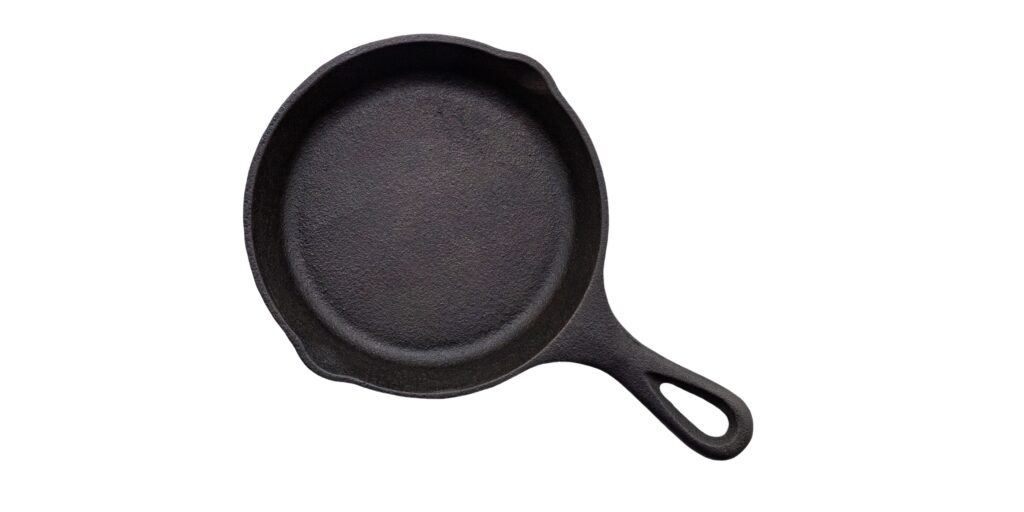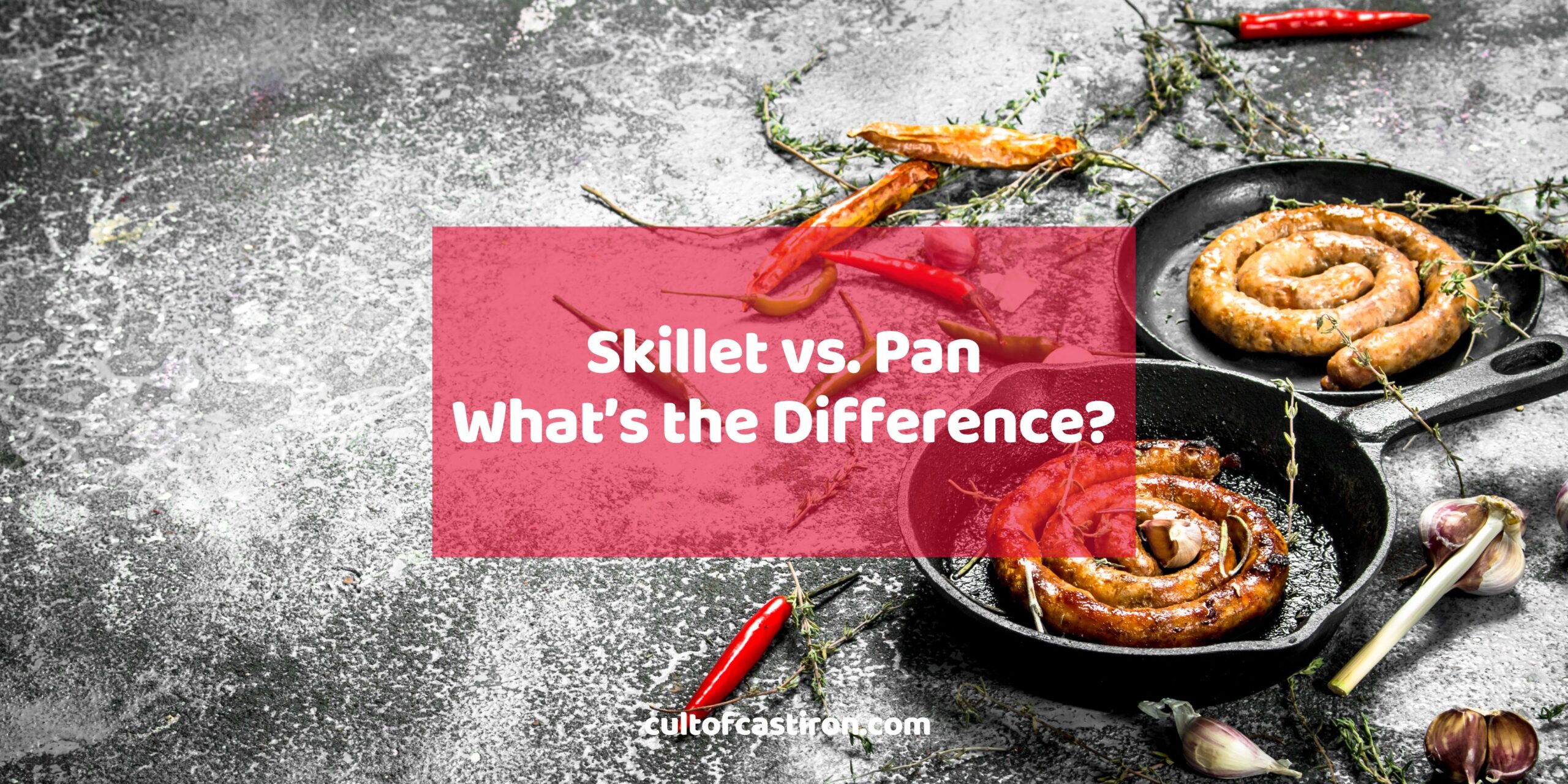When you say “skillet” or “pan”, you probably picture the ubiquitous flat-bottomed vessel that is used for cooking. For the most part, that is correct, and most people who do not care for hairsplitting closely-related terms (like me) are satisfied with not giving a hoot to such pedantic distinctions.
But if you really insist on knowing, I made this article to present a short historical background for each of these terms, and an explanation of they are both similar and different at the same time.
The Etymology of “Skillet” and “Pan”
According to the Oxford Learner’s Dictionary, the term “pan” came from “Old English panne, of West Germanic origin” Moreover, it physically describes a pan as “a container, usually made of metal, with a handle or handles…” that is used for cooking.
Meanwhile, the same source says that the term “skillet” came from “Middle English: perhaps from Old French escuelete” and is described as “a large shallow pan with a long handle…” that is used for cooking.
With all of that, you can see that this is more of a quirk of the English language, as both terms came from different cultures, and have been used parallelly and thus they have now become interchangeable with each other. However, the dictionary offers two different physical descriptions, and thus the debate rages on.
So, is There Really a Difference Between a “Skillet” and a “Pan”?
Based on their dictionary descriptions,. the clearest distinction between a skillet and a pan are the presence of a handle. The long and short of it is: a skillet is a type of pan with a long handle on one end, while a pan is any type of cooking vessel with a handle – regardless of number and length.
Basically, it can be reduced to a “all skillets are pans, but not all pans are skillets” type of argument. If you revisit the Oxford Dictionary description of the term “pan”, you’ll see that it is very general in nature. That is “a container…with a handle or handles”. With this, a dual handle pan, a wok, and yes, a skillet, can all be classified as types of pans.



In contrast, a “skillet” is slightly less vague, being described as “a pan with a long handle”. Moreover, the term “skillet” has since evolved to specifically refer to that type of frying pan, usually made from cast iron. You know…this one:

Meanwhile, when people say “pan”, they often refer to sauté pans like this one:

For the rest of this short article, we will discuss the differences between a skillet and a sauté pan. But again, the differences are quite subtle.
The Other Differences Between Skillets and Sauté Pans (If We’re Really Splitting Hairs)
While the type of handle is the common differentiator between a skillet and a sauté pan, there may be other design cues that separate each type of cookware. With that said, these are only applied loosely.
- Depth – sauté pans are typically deeper than skillets (though not as deep as deep skillets).
- Sides – sauté pans typically have straight side walls, while skillets have flared side walls
- Lid – sauté pans often come with lids, while skillets do not.
Even with these differences, these two types of cookware can be used interchangeably in most cases. However, stir frying and flipping will be easier when done with a skillet as its flared walls are more accessible to spatulas. Moreover, the angle of these flared side walls allow for easier tossing as well.
Meanwhile, a sauté pan’s taller and straighter sides makes it easier to cook food with lots of liquids due to its higher capacity. And with its lid closed, it prevents spilling and splattering, especially when making sauces.
The Bottom Line
I’ve used both a skillet and sauté pan in my kitchen, and what I can say is this: both are versatile, and both can be used in place of the other in a pinch. Do you need both types of pan in the kitchen? It depends on your needs, but for me, I’d go with a skillet for everyday frying as it is just easier to maneuver things around in that thing. If a recipe calls for a sauce, then I will use my sauce pan. And if I need to cook something with liquids, like stews or braised meats, then it will be a job for my braiser or my Dutch oven.
Now, do these pedantic distinctions between what constitutes a skillet and a pan matter? That’s for you to decide. But, in most cases, no one would bat an eye if you refer to one as the other and vice versa.
To learn more about cooking with cast iron, check out Cult of Cast Iron! Scroll through our blog dedicated to all things cast iron and find helpful tips and tricks to level up your cast iron skills! Discover a whole new world of cooking and spread the Cult of Cast Iron word today!

Miguel is a cast iron enthusiast from Cavite, Philippines. He works in the digital marketing field as a content marketing strategist. On the side, he manages a small online bookstore and tends to his plants.

